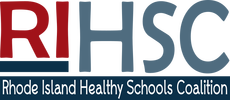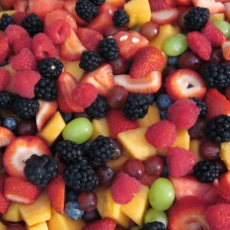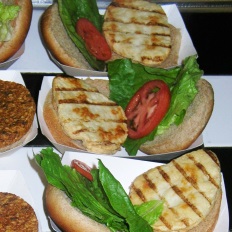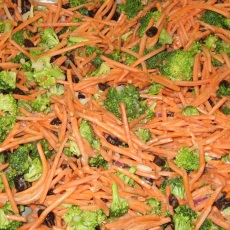NUTRITION & HEALTHY EATING
The link between nutrition and learning is well documented. Good nutrition is essential for students to achieve their full academic potential, full physical and cognitive growth, and lifelong health and well-being. Developing healthy eating habits at a young age can reap benefits for a lifetime and schools play a critical role in helping children learn and practice healthy eating habits.
Think about it.
Children spend over six hours a day at school and many eat two or more meals there, which can be the majority of their daily caloric consumption. In addition, schools are places for teaching and learning and are the ideal setting for children to gain knowledge of proper nutrition and build comfort with healthy foods and eating patterns.
Think about it.
Children spend over six hours a day at school and many eat two or more meals there, which can be the majority of their daily caloric consumption. In addition, schools are places for teaching and learning and are the ideal setting for children to gain knowledge of proper nutrition and build comfort with healthy foods and eating patterns.
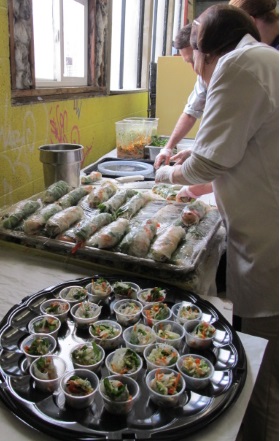
What can schools do?
- Serve school meals that meet all federal and state nutrition standards and are appealing to students. Nutrition standards have been strengthened for breakfast, lunch, and after-school snack program with the passage and implementation of the Healthy, Hunger-Free Kids Act of 2010 that requires more fruits, vegetables and whole grain servings and limits the amount of sodium, sugar and fat in meals (see Laws & Regulations). School food service can develop and market kid-friendly recipes, mix up their menus and excite their student customers. They can utilize locally grown fresh foods and ensure students and families have input and can provide feedback on the program.
- Try using the Smarter Lunchrooms Scorecard for simple, no-cost or low-cost strategies that lunchrooms can use to increase participation, improve consumption of healthy food, and reduce food waste.
- Encourage participation in school meals. School meals have become significantly healthier and appealing with more locally sourced and culturally appropriate menu items. Research suggests that the nutritional quality of school meals is healthier than meals brought from home, in both lower-income and higher-income subgroups. Schools should promote the meals program and engage students and families in menu development and taste tests and assess the cafeteria environment to make it an appealing and accessible place to dine.
- Ensure all families are aware of the federal free & reduced-price meal application process. Offer help to parents/guardians to navigate the process and complete applications. RIHSC’s Meal Benefit Application Video is a step-by-step guide (in English and Spanish) which can be paused, as needed, when filling out an application. The application ca be overwhelming or confusing to complete so this simply worded video tutorial can help.
- Enforce competitive foods laws/regulations. Gone are the days when soda, candy and fried chips are allowed to be sold to students in vending machines, school stores and a la carte lines in the cafeteria. All Competitive Foods (foods/beverages sold outside of the reimbursable meals program) must meet strict state/federal nutrition standards. This includes school fundraisers like bake sales with brownies and cookies and other treats of low-nutritional value. Competitive foods that do not meet nutrition standards cannot be sold before, during and up to one hour after the school day (see Laws & Regulations).
- Provide comprehensive nutrition education. Schools must provide nutrition education to students and should model healthy messaging throughout the school setting. Nutrition lessons can be taught as part of a Health/Physical Education curriculum and also integrated into other subjects such as math, language arts and science in all grades.
- Make the school cafeteria a central place for nutrition education and promotion. Signage, food placement and promotion, celebrations, artwork and announcements can reinforce positive nutrition messages and increase positive perceptions of the healthy meals program.
- Ban advertising and marketing of foods/beverages that can’t be sold in schools. If it can’t be sold, it can’t be advertised or allowed to be marketed to students. Such practices are prohibited under USDA Healthy Hunger Free Kids Act and RIGL 16-21-7.1 as they undermine nutrition education and expose children to overt commercialization.
- Plan only healthy school celebrations. Visit our Healthy School Celebrations page for resources.
Healthy Eating Websites
School Breakfast
- RIDE School Breakfast Expansion Toolkit (implementing Breakfast After the Bell programs) **NEW FOR FALL 2021**
- VIDEO: North Providence HS Grab & Go Healthy Breakfast Program
- RIDE Healthy School Breakfast handout
- Breakfast for Health FRAC research brief
- Breakfast for Learning FRAC research brief
Snacks in School
FOR RHODE ISLAND SCHOOLS:
FEDERAL SMART SNACKS IN SCHOOL:
Federal (USDA) regulations for "competitive" foods & beverages in schools participating in federal school meals programs
**PLEASE NOTE that the below list of resources refers to FEDERAL Smart Snacks in School requirements. Competitive foods/beverages sold in Rhode Island schools MUST COMPLY with additional state standards** (see above RI Guidance for School Snacks Compliance)
ADDITIONAL RESOURCES:
- RI Guidance for Healthy and Compliant School Snacks (RIDE/RIHSC) - summarizes BOTH state and federal (Smart Snacks in School) requirements for a complete reference guide for RI schools
FEDERAL SMART SNACKS IN SCHOOL:
Federal (USDA) regulations for "competitive" foods & beverages in schools participating in federal school meals programs
**PLEASE NOTE that the below list of resources refers to FEDERAL Smart Snacks in School requirements. Competitive foods/beverages sold in Rhode Island schools MUST COMPLY with additional state standards** (see above RI Guidance for School Snacks Compliance)
- A Guide to Smart Snacks in School (USDA)
- Best Practices for Healthy School Fundraisers (USDA)
- Smart Foods Planner (Alliance for a Healthier Generation)
- Smart Snacks Calculator (Alliance for a Healthier Generation)
ADDITIONAL RESOURCES:
- Choose Smarter Snacks! (RI Healthy Schools Coalition)
- Healthy Snack Ideas (English) (URI SNAP-Ed)
- Healthy Snack Ideas (Spanish) (URI SNAP-Ed)
- Guide to Getting Junk Food Out of Your Child's Classroom (The Lunch Tray)
- Healthy School Snacks for Kids (Center for Science in the Public Interest)
- "Lookalike" Smart Snacks in Schools (Rudd Center)
School Rewards & Celebrations
- Non-Food Reward Ideas (Center for Science in the Public Interest)
- Healthy Ways to Reward Kids (Alliance for a Healthier Generation)
- Celebrations that Support Child Health (Alliance for a Healthier Generation)
- Healthy Fundraising Solutions (Alliance for a Healthier Generation)
Food Waste
- Food Waste Reduction Toolkit for RI Schools (RI School Recycling Club - RISRP brochure in English or Spanish)
- Help Prevent Wasted Food (USDA)
- Share Table and Food Donation Guidance for Schools (RI Departments of Education and Health)
- Rhode to End Hunger: Donate Surplus Food From Your Business (RI coalition of organizations)
Research
- Health and Hunger through the Lens of Race, Ethnicity and Culture AASA (The School Superintendents' Association)
- School Meals are Essential for Student Health and Learning FRAC research brief
- Creating Supportive School Nutrition Environments Bridging the Gap Research Brief
- Improving Access to Drinking Water in Schools Bridging the Gap Research Brief
- Marketing & Promotion of Foods and Beverages at School Bridging the Gap Research Brief
- Start the Day Ready to Learn with Breakfast in the Classroom: Principals Share What Works FRAC (Food Research and Action Center)
